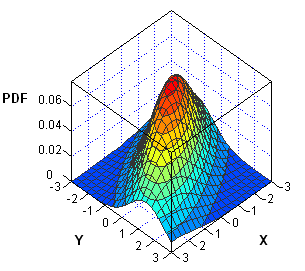The DO Loop
Statistical programming in SAS with an emphasis on SAS/IML programs
Suppose that you have two data vectors, x and y, with the same number of elements. How can you rearrange the values of y so that they have the same relative order as the values of x? In other words, find a permutation, π, of the elements of y so

I've been working on a new book about Simulating Data with SAS. In researching the chapter on simulation of multivariate data, I've noticed that the probability density function (PDF) of multivariate distributions is often specified in a matrix form. Consequently, the multivariate density can usually be computed by using the

I often use the SAS/IML language for simulating data with certain known properties. In fact, I'm writing a book called Simulating Data with SAS. When I simulate repeated measurements (sometimes called replicated data), I often want to generate an ID variable that identifies which measurement is associated with which subject
A reader wrote for help with a computational problem. He has a vector of length N and the vector contains integer values in the range [1, 120], which represent months for which events occurred over a 10-year period. The question is: what is the 24-month period for which the most

"Help! My simulation is taking too long to run! How can I make it go faster?" I frequently talk with statistical programmers who claim that their "simulations are too slow" (by which they mean, "they take too long"). They suspect that their program is inefficient, but they aren't sure why.

In the SAS/IML language, a user-defined function or subroutine is called a module. Modules are used to extend the capability of the SAS/IML language. Usually you need to explicitly load modules before you use them, but there are two cases where PROC IML loads a module automatically. Modules in IMLMLIB
